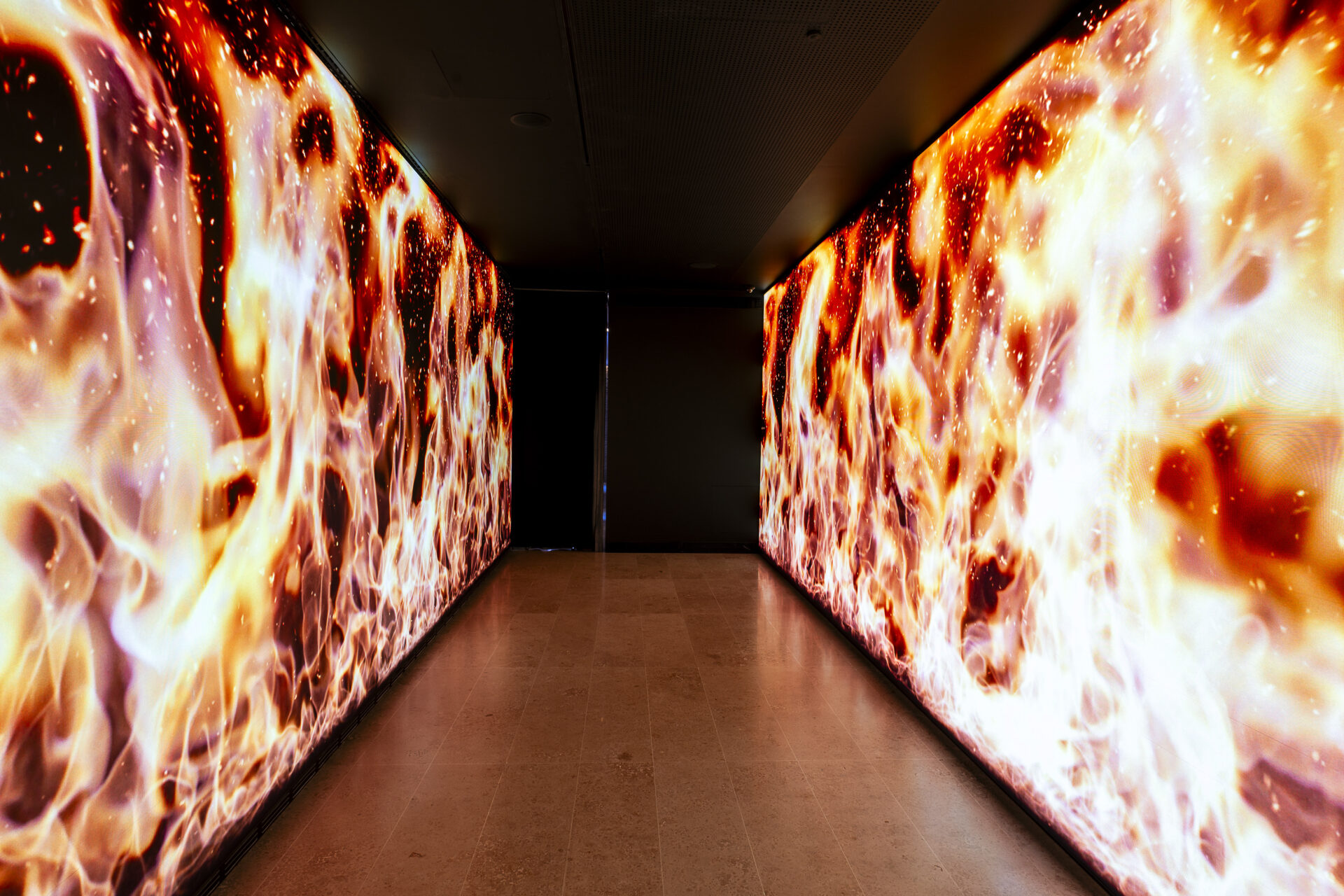Mat Collishaw is one of the key figures of the so-called Young British Artists who emerged in London in the late 1980s. Collishaw participated in the exhibition Sensation: Young British Artists from the Saatchi Collection, which opened at the Royal Academy of Arts in 1997 and which, as its name suggests, caused a real sensation, attracting more than 300,000 visitors. The BBC rated it a “giant success”, although it described it as a show of “gory images of dismembered limbs and explicit pornography”.1
Collishaw creates work that brings problems of moral ambiguity face to face with imagery that is impressive and appealing in formal terms. Combining references to art history, literature and the Victorian era with modern technology, he presents powerful images and objects that often recontextualise the impact of traditionally disturbing and sinister subjects.
As the art critic Rachel Campbell-Johnston explains: “It’s a legacy of his childhood, he presumes. He was born in 1966, the second of four boys brought up on a Nottingham council estate. His parents were committed Christadelphians. Every Wednesday and twice on Sunday the young Collishaw attended the Bible study sessions of a sect that appeared to disapprove of pretty much everything, from female education (his mother had to study in secret) to television sets … He emerged as an artist who, thanks to his upbringing, was looking for images that could carry spectators beyond the mundane. This desire, over the course of more than three decades, has led to dozens of imaginatively complex, often technically complicated and usually critically acclaimed pieces that tend to work, first, by delivering a visual gut punch before shoving the viewer into another way of looking.”2
Transformer, conversely, arose through a specific commission from Hortensia Herrero to create a work inspired by the Fallas in Valencia, one of her great passions. Collishaw set to work and began researching the history of the city. As the artist himself says: “The Fallas struck me as totally crazy, seeing what goes on here with these huge ninots of people like Donald Trump, Ronald Reagan or whoever, these kinds of famous political love or hate figures that were exhibited and then burned. The whole event was like a pagan festival, but it also incorporated the idea of celebrity, like a social media thing. So I thought it was really interesting and I started doing a bit more research and going back hundreds of years to the origins of it, when apparently the commercial craftsmen, the people who actually made things during the dark winter months, needed lighting, so they made these constructions to hold their candles. And then, when spring arrived, when it got lighter in the evening, they didn’t need them so much to work, so they took them all out and threw them away. And there had to be some process to get rid of them, which was this burning, and this burning became a ritual, because we were going through a transformation from the winter months to the months of spring, obviously a crucial period in the pagan calendar. It’s a time of rebirth, when we start going outdoors and the plants begin to grow. So it’s an important time when you depend on what grows and on whether you’re going to be able to eat for the next twelve months. And this gradually gained momentum until children went around knocking on people’s doors asking for little pieces with which to build objects or figures that could then be burned as part of the festival.”3
Collishaw incorporates real images of the Fallas into this work, along with others of flowers and butterflies burning, as a symbol of rebirth, of the purifying fire that renews everything, in a work of great sensuality.
Left in Dust arose from one of the artist’s visits to the restoration works in the Palacio Valeriola, where he was able to view the remains of the ancient Roman Circus of Valencia that had been found. This led him to construct a work consisting of an LED screen hung from the ceiling, recalling the shape of the Roman Circus, on which he projects a series of horses starting to walk, then trotting, and ending up in front of an excited crowd that encourages them and cheers them on, in a clear reference to chariot races. Collishaw explains that during the Roman Empire “one of the galvanising forces that functioned as a way of pacifying the populace was the elaborate organisation of entertainment and games, and gladiatorial combats and chariot races were the main attractions in the arena. However, despite these advances, the Romans could hardly be described as considerate and compassionate. There is suffering in seeing a horse, free to play and graze, being co-opted into the mad frenzy of this theatre of entertainment. The horse’s throbbing sensuality was undeniably part of the attraction of these races, and the madness of an excited crowd is an irresistible and seductive spectacle.”4
